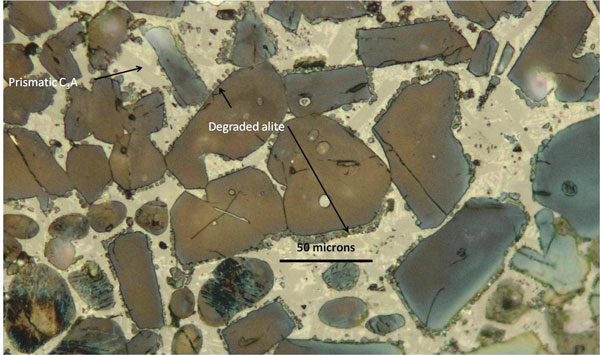Kiln feed and clinker quality
Commissioning a new cement plant generally centres around the performance in terms of tonnes per day, kWh/t, or other operational matters. It is easy to lose sight of the need to achieve the required quality while fulfilling these other requirements. The following article describes a case study of quality issues and the means of improvement during the commissioning of a 4000tpd precalciner kiln.

Coarse (brown) alite crystals, coarse prismatic C3A and degraded alite indicating poor-quality clinker
Microscopic examination of clinker from the new cement plant, combined with laboratory studies of the combinability of the feed at a range of temperatures, indicated the actions needed to improve clinker quality from the kiln.
The most important action was to ensure that the sand fraction of the raw mill output was ground such that less that two per cent acid-insoluble residue remained on a 45µm sieve from the whole feed. The plant used four main raw materials for the feed to fire in the kiln: limestone, clay, sand and iron oxide. The work described here was to investigate the quality of the clinker produced by the kiln after startup in terms of microscopical characteristics and to decide on which actions were required to maintain and accelerate an improvement.
Extensive work has been carried out in the past on the effect of coarse raw materials on burnability of the raw feed in a cement kiln.1, 2 Early indications were that the coarseness of the feed was causing a degree of difficulty, in combination with a number of operational problems. There was an attempt to determine to what extent the two factors were related.

